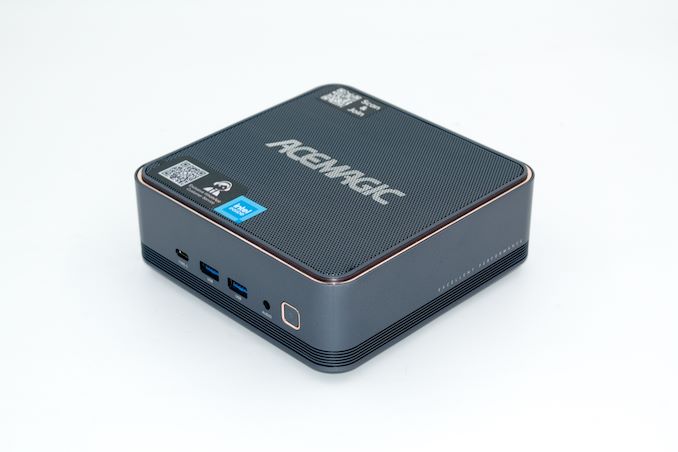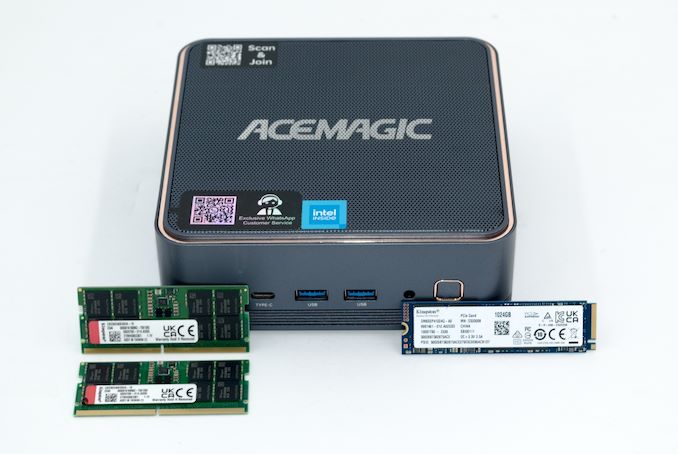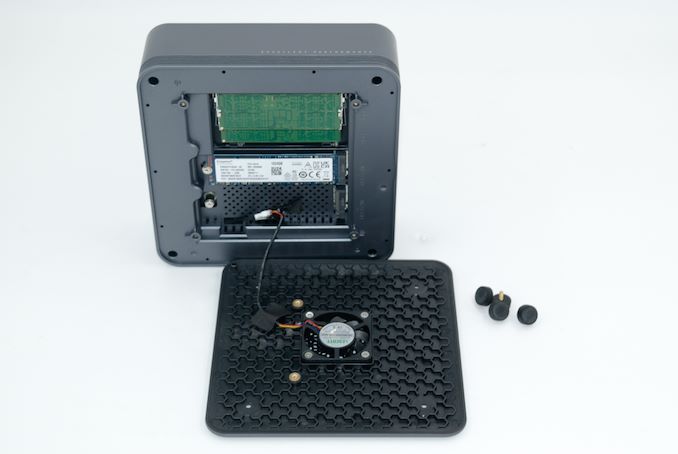Compact computing systems have gained significant market share over the last decade. Improvements in the performance per watt metric of processors have enabled the replacement of bulky desktop PCs by ultra-compact form-factor (UCFF) and small form-factor (SFF) machines. The Meteor Lake series of processors is the latest Intel offering to service this market. They have had a drawn-out launch since initial information was officially made available in September 2023. The tile-based chiplet configuration held together with Foveros packaging represented a major shift in Intel’s approach to the consumer market, with notebook platforms being the primary focus. That has not prevented multiple vendors from introducing SFF / UCFF desktop systems using the Meteor Lake Ultra H-series (MTL-H) processors.
ACEMAGIC sampled us their F2A 125H offering around the time we were completing the evaluation of the ASRock Industrial NUC BOX-155H and the ASUS NUC14RVHv7 UCFF systems. The F2A is has a larger physical footprint compared to either of those systems. This allows for a better thermal solution, enabling the internal processor (Core Ultra 5 125H) to be operated with a sustained power limit (PL1) setting of 65W.
This review takes a detailed look at the features and performance profile of the ACEMAGIC F2A 125H. The analysis also provides some insights into the optimal operating power setting for the MTL-H processors.
Introduction and Product Impressions
The last decade has seen significant strides in processor performance as well as power efficiency. Coupled with advancements in thermal solutions, we have seen compact systems with low-power SoCs becoming capable of replacing bulky desktops for many use-cases. This trend gained mainstream attention with Intel’s introduction of the ultra-compact form-factor (4in. x 4in.) NUC in the early 2010s.
In recent years, we have seen a steady progression in the power envelop of the processors getting integrated into such systems. The first generation NUCs had processors with a TDP between 6W and 15W. In the late 2010s, 28W processors formed the flagship lineups. With Tiger Lake, Intel introduced the Panther Canyon NUCs with a 40W limit. 65W has proved almost impossible to cool within UCFF constraints – and that has prompted ASUS to introduce the NUC14 Pro+ with a slightly larger footprint. ACEMAGIC’s F2A also operates the processor at 65W albeit with a footprint even larger than that of the NUC14 Pro+.
The F2A system comes in at 147 mm x 147 mm x 52 mm (compared to the 144 mm x 112 mm x 41 mm of the NUC14 Pro+ and 117 mm x 112 mm x 54 mm of the tall 4″x4″ NUC14 Pro). The promotion for the PC’s AI features is heavy in the external package as well as the marketing collateral. The package contents include a 120W (19V @ 6.3A) power adapter, a geo-specific power cord, a HDMI cable, an user manual, and a mounting plate with screws in addition to the main unit.
ACEMAGIC sells the F2A as a ready-to-use system with 32 GB of DDR5-5600 SODIMMs and a 1 TB PCIe 4.0 x4 NVMe SSD. Windows 11 Home is pre-installed on the system. We always advise users of systems from vendors such as ACEMAGIC to wipe the drive and install their own copy of the OS after getting the key from the original installation.
Our sample was equipped with Kingston SODIMMs and a Kingston Design-In OEM SSD (BiCS5 TLC NAND behind a Silicon Motion SM2267XT DRAM-less controller).
Access to the SSD and SODIMM slots is obtained by removing four screws from the underside of the system. We were pleasantly surprised to find a fan attached to the underside. Active cooling for the SSD and SODIMMs ought to result in good thermal performance, and that is one of the aspects evaluated further down in this review.
The full specifications of the review sample are provided in the table below.
| ACEMAGIC F2A 125H Specifications (as tested) |
|
| Processor | Intel Core Ultra 5 125H Meteor Lake-H 4P + 8E + 2LPE / 18T, up to 4.5 GHz (P) up to 3.6 GHz (E) up to 2.5 GHz (LPE) Intel 4 (CPU) / TSMC N5 (iGPU), 18MB L2, Min / Max / Base TDP: 20W / 115W / 28W PL1 = 65W, PL2 = 90W |
| Memory | Kingston CBD56S46BS8HA-16 DDR5-5600 SODIMMs 46-45-45-90 @ 5600 MHz 2×16 GB |
| Graphics | Intel Arc Graphics (7 Xe-cores @ up to 2.2 GHz) |
| Disk Drive(s) | Kingston Design-In SSD OM8SEP41024Q-A0 (1 TB; M.2 2280 PCIe 4.0 x4 NVMe;) (Kioxia BiCS5 (112L) 3D TLC; Silicon Motion SM2267XT DRAM-less SSD Controller) |
| Networking | 1x 2.5 GbE RJ-45 (Realtek RTL8125) Intel Wi-Fi 7 BE200 (2×2 802.11be – 5.8 Gbps) |
| Audio | Conexant SN6140 (3.5mm Audio Jack in Front) Digital Audio with Bitstreaming Support over HDMI and Display Port (Type-C) |
| Video | 2x HDMI 2.0 (Rear) 1x DisplayPort 1.4 over Type-C Alt-Mode (Front / USB 3.2 Gen 2) |
| Miscellaneous I/O Ports | 2x USB 3.2 Gen 1 Type-A (Front) 1x USB 3.2 Gen 2 Type-C (Front, with DP Alt Mode) 2x USB 3.2 Gen 1 Type-A (Rear) |
| Operating System | Windows 11 Enterprise (22631.3593) |
| Pricing | $699 (Amazon) $569 (ACEMAGIC Storefront) (as configured, with Win 11 Home) |
| Full Specifications | ACEMAGIC F2A 125H Specifications |
In the next section, we take a look at the system setup and follow it up with a detailed platform analysis.





